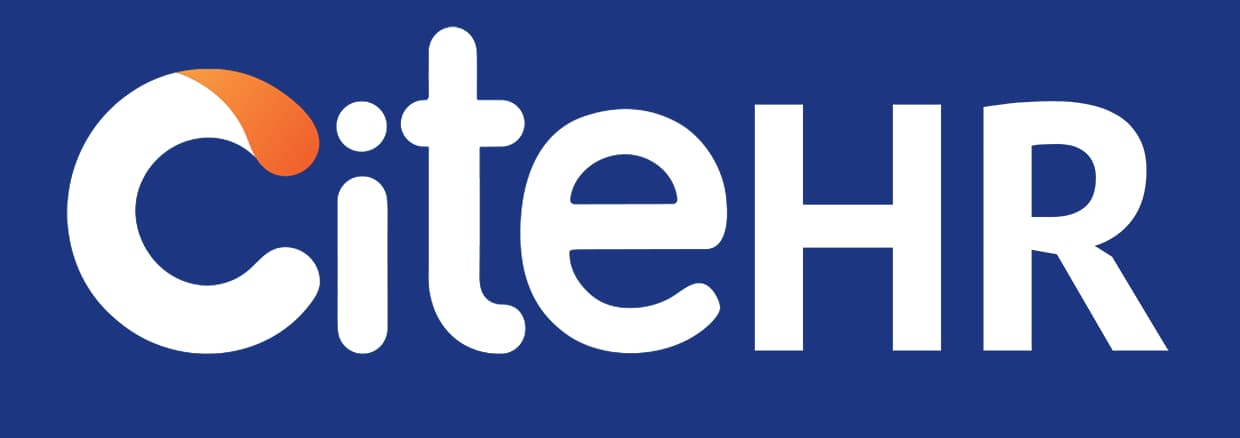Dear friends,
Under Section 45(2), any inspector or other authorized officer of ESIC may, for the purpose of inquiring into the correctness of any particulars stated in any return furnished under the ESI Act, require any employer to furnish any record or information to ascertain whether the provisions of this Act have been complied with.
Under Section 45A of the ESI Act, 1948, if no returns, particulars, registers, or records are submitted, furnished, or maintained in accordance with the provisions of Section 44, or if any inspector or other officials of ESIC is prevented by either the principal employer or the contractor (immediate employer) from exercising his functions or discharging his duties under Section 45, the ESIC may, based on available information, determine the amount of contributions payable in respect of the employees of that factory or establishment. Under Section 45B, any such contribution assessed by the ESIC may be recovered as an arrear of land revenue.
In our factory, every month, as per the wages register of the contractors duly certified by the authorized representatives of the principal employer (in short "P.E."), the ESI and PF contributions of the employees of the contractors are deposited by the P.E. within due time. Also, half-yearly returns of ESI contributions, along with receipted challans against monthly deposits of ESI contributions, are submitted to ESI authorities on time. The ESI Inspectors visit the factory from time to time and inspect the records of contributions paid by P.E., attendance and wage registers under the C.L. (R&A) Act, and the register of employees (Form-6) under ESI (G) Regulation maintained by contractors. They also put their signature on those records/documents. The Inspectors have earlier observed in the Inspection Book that "the maintenance of the records is satisfactory."
However, the Dy. Director (Rev.) of the Regional ESI Office inspected our factory in subsequent years. Despite the earlier inspections by Insurance Inspectors, the Dy. Director assessed ESI contributions at a much higher rate over the bills of the contractors paid by the P.E. during the relevant years, taking labor components (wages) to be 25% to 40% of the bill amounts (the contractors are not labor supply contractors; they are only job contractors) and directed the P.E. to deposit the differential amount of contribution with interest within a limited time to avoid prosecution under the Act. Besides, the ESI Authority may also levy damages of up to 25% of the demanded amount of the differential contribution.
Now, the management has gone to the Employees' Insurance Court against the above order of the Dy. Director (Rev.), ESIC.
Questions Arising from the Situation
Here the following questions arise:
(i) Is there any scope for assessment of contribution over the bills paid to the contractor, where the ESI inspectors had earlier verified the relevant registers/documents, deposited amount, and were satisfied with the registers maintained under the Act?
(ii) Is the Dy. Director (Rev.) justified in taking 25 to 40% of the contractors' billed amount as wages of their labor, while the labor cost of a firm/industry (CTC) is normally taken at around 10-15% of the cost of production/business?
I would like to request you all to enlighten me about the percentage rate of the billed amount of the contractor generally taken by the ESI authority towards the labor component in cases where the contractor has failed to produce wage and employee registers in similar situations in your factory/organizations. Also, please offer your valued suggestions on the action to be taken by the P.E. in such a situation like ours.
Yours truly,
SK Hota
Head-HR, Jayshree Chemicals Ltd., Orissa
From India, Calcutta
Under Section 45(2), any inspector or other authorized officer of ESIC may, for the purpose of inquiring into the correctness of any particulars stated in any return furnished under the ESI Act, require any employer to furnish any record or information to ascertain whether the provisions of this Act have been complied with.
Under Section 45A of the ESI Act, 1948, if no returns, particulars, registers, or records are submitted, furnished, or maintained in accordance with the provisions of Section 44, or if any inspector or other officials of ESIC is prevented by either the principal employer or the contractor (immediate employer) from exercising his functions or discharging his duties under Section 45, the ESIC may, based on available information, determine the amount of contributions payable in respect of the employees of that factory or establishment. Under Section 45B, any such contribution assessed by the ESIC may be recovered as an arrear of land revenue.
In our factory, every month, as per the wages register of the contractors duly certified by the authorized representatives of the principal employer (in short "P.E."), the ESI and PF contributions of the employees of the contractors are deposited by the P.E. within due time. Also, half-yearly returns of ESI contributions, along with receipted challans against monthly deposits of ESI contributions, are submitted to ESI authorities on time. The ESI Inspectors visit the factory from time to time and inspect the records of contributions paid by P.E., attendance and wage registers under the C.L. (R&A) Act, and the register of employees (Form-6) under ESI (G) Regulation maintained by contractors. They also put their signature on those records/documents. The Inspectors have earlier observed in the Inspection Book that "the maintenance of the records is satisfactory."
However, the Dy. Director (Rev.) of the Regional ESI Office inspected our factory in subsequent years. Despite the earlier inspections by Insurance Inspectors, the Dy. Director assessed ESI contributions at a much higher rate over the bills of the contractors paid by the P.E. during the relevant years, taking labor components (wages) to be 25% to 40% of the bill amounts (the contractors are not labor supply contractors; they are only job contractors) and directed the P.E. to deposit the differential amount of contribution with interest within a limited time to avoid prosecution under the Act. Besides, the ESI Authority may also levy damages of up to 25% of the demanded amount of the differential contribution.
Now, the management has gone to the Employees' Insurance Court against the above order of the Dy. Director (Rev.), ESIC.
Questions Arising from the Situation
Here the following questions arise:
(i) Is there any scope for assessment of contribution over the bills paid to the contractor, where the ESI inspectors had earlier verified the relevant registers/documents, deposited amount, and were satisfied with the registers maintained under the Act?
(ii) Is the Dy. Director (Rev.) justified in taking 25 to 40% of the contractors' billed amount as wages of their labor, while the labor cost of a firm/industry (CTC) is normally taken at around 10-15% of the cost of production/business?
I would like to request you all to enlighten me about the percentage rate of the billed amount of the contractor generally taken by the ESI authority towards the labor component in cases where the contractor has failed to produce wage and employee registers in similar situations in your factory/organizations. Also, please offer your valued suggestions on the action to be taken by the P.E. in such a situation like ours.
Yours truly,
SK Hota
Head-HR, Jayshree Chemicals Ltd., Orissa
From India, Calcutta
We are referring to a Circular of ESI which is available at this link: https://www.citehr.com/294729-esi-ci...#axzz19haSV1at. Please revert indicating under which category you will be assessed for ESI.
With Regards,
Regards
From India, Bangalore
With Regards,
Regards
From India, Bangalore
Guidelines for Compliance with Labor Components
If the contractor or P.E. fails to comply with the labor component, and no muster roll or wage register in respect of the contractor's employees is made available for inspection, according to the present guidelines given by the Corporation to the inspecting authorities, they have to assess 25% of the total amount paid to the contractor as the wage component if the amount paid to the contractor includes material costs as well.
If he is exclusively a labor contractor, and no material cost is involved in the total amount paid to the contractor, the wage component is assessed at 60% of the total amount paid to the contractor.
These measures are taken only when both the contractor and P.E. fail to furnish the records to the inspecting authority and are unable to assess the contribution on their own as a last resort.
In case the employer has already complied with the payments made to the contractor, it is the duty of the P.E. to produce the relevant records for inspection. The contractor is also required to maintain the employees' register under Regulation 32(1)(a) of the ESI (General) Regulations 1950, and the same is to be handed over to the principal employer at the time of settling his account as per section 41-(1A) which is reproduced below.
"41(1A) The immediate employer shall maintain a register of employees employed by or through him as provided in the regulations and submit the same to the principal employer before the settlement of any amount payable under subsection (1)."
Therefore, the principal employer cannot evade the responsibility of either the production of records or the payment of contribution.
Section 45(4) provides for re-inspection or test inspection by a higher authority. Regulation 102 empowers the Deputy Director for such inspection.
From India, Hyderabad
If the contractor or P.E. fails to comply with the labor component, and no muster roll or wage register in respect of the contractor's employees is made available for inspection, according to the present guidelines given by the Corporation to the inspecting authorities, they have to assess 25% of the total amount paid to the contractor as the wage component if the amount paid to the contractor includes material costs as well.
If he is exclusively a labor contractor, and no material cost is involved in the total amount paid to the contractor, the wage component is assessed at 60% of the total amount paid to the contractor.
These measures are taken only when both the contractor and P.E. fail to furnish the records to the inspecting authority and are unable to assess the contribution on their own as a last resort.
In case the employer has already complied with the payments made to the contractor, it is the duty of the P.E. to produce the relevant records for inspection. The contractor is also required to maintain the employees' register under Regulation 32(1)(a) of the ESI (General) Regulations 1950, and the same is to be handed over to the principal employer at the time of settling his account as per section 41-(1A) which is reproduced below.
"41(1A) The immediate employer shall maintain a register of employees employed by or through him as provided in the regulations and submit the same to the principal employer before the settlement of any amount payable under subsection (1)."
Therefore, the principal employer cannot evade the responsibility of either the production of records or the payment of contribution.
Section 45(4) provides for re-inspection or test inspection by a higher authority. Regulation 102 empowers the Deputy Director for such inspection.
From India, Hyderabad
CiteHR is an AI-augmented HR knowledge and collaboration platform, enabling HR professionals to solve real-world challenges, validate decisions, and stay ahead through collective intelligence and machine-enhanced guidance. Join Our Platform.





 19
19
